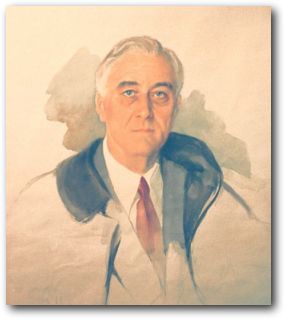
Artist Elizabeth Shoumatoff commenced an oil portrait of Franklin Roosevelt at noon on April 12, 1945.
This is as far as she got. FDR was being served lunch when he said, “I have a terrific headache” — and collapsed of a massive cerebral hemorrhage.

Artist Elizabeth Shoumatoff commenced an oil portrait of Franklin Roosevelt at noon on April 12, 1945.
This is as far as she got. FDR was being served lunch when he said, “I have a terrific headache” — and collapsed of a massive cerebral hemorrhage.
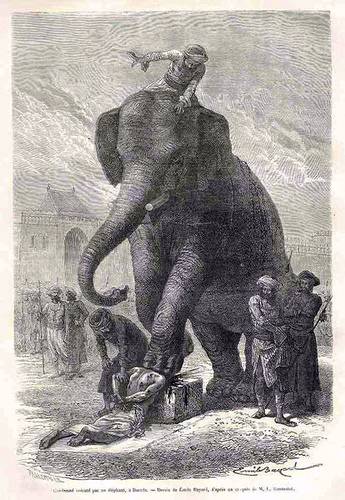
Account of a torture and execution by elephant at Baroda, India, 1814:
“The man was a slave, and two days before had murdered his master, brother to a native chieftain, called Ameer Sahib. About eleven o’clock the elephant was brought out, with only the driver on his back, surrounded by natives with bamboos in their hands. The criminal was placed three yards behind on the ground, his legs tied by three ropes, which were fastened to a ring on the right hind leg of the animal. At every step the elephant took, it jerked him forward, and every eight or ten steps must have dislocated another limb, for they were loose and broken when the elephant had proceeded five hundred yards. The man, though covered in mud, showed every sign of life, and seemed to be in the most excruciating torments. After having been tortured in this manner for about an hour, he was taken to the outside of the town, when the elephant, which is instructed for such purposes, was backed, and put his foot on the head of the criminal.”
— From The Percy Anecdotes, 1821
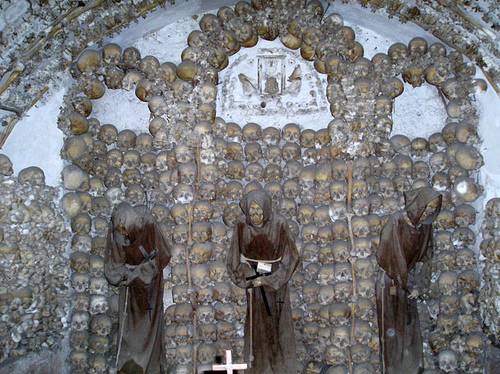
Rome’s Capuchin Crypt contains the remains of more than 4,000 monks who died between 1528 and 1870, including several intact skeletons wearing Franciscan habits.
Reportedly it inspired the Sedlec Ossuary.

Drowning victims:
Canadians John and Jackie Knill were vacationing in Thailand when the 2004 Indian Ocean tsunami struck, killing both. A missionary later found their camera, which showed the wave approaching until it was nearly upon them.
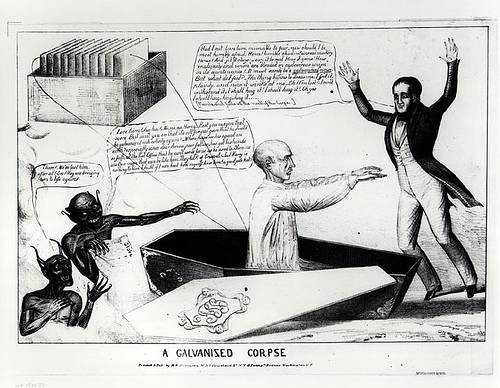
Frankenstein nearly came true in 1803, when Italian physicist Giovanni Aldini ran electric current through the newly dead body of murderer George Forster.
The prison record states that “on the first application of the process to the face, the jaws of the deceased criminal began to quiver, and the adjoining muscles were horribly contorted, and one eye was actually opened. In the subsequent part of the process the right hand was raised and clenched, and the legs and thighs were set in motion.”
One witness reportedly died of fright, but there was really no cause for alarm. If Forster had returned to life, the prison planned to re-execute him — after all, he’d been sentenced to “hang until he be dead.”
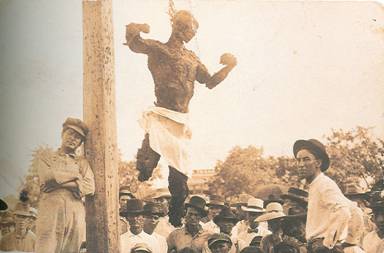
Between 1882 and 1930, Texans committed 492 lynchings. By most accounts, the most horrible of these was the 1916 slaying of Jesse Washington, a Waco farmhand who had confessed to the rape and murder of a white farmer’s wife.
A jury of 12 whites deliberated for four minutes before declaring Washington guilty. They called for the death penalty, but before authorities could act, he was dragged from the courtroom, doused with coal oil, and suspended alive over a bonfire. A witness wrote:
Washington was beaten with shovels and bricks … was castrated, and his ears were cut off. A tree supported the iron chain that lifted him above the fire. … Wailing, the boy attempted to climb up the skillet hot chain. For this, the men cut off his fingers.
Washington’s corpse was put in a cloth bag and dragged behind a car to Robinson, where it was hung from a pole. Northern newspapers condemned the lynching, but Texas was largely unrepentant. The image above is taken from a postcard (!); on the back someone has written, “This is the barbeque we had last night. My picture is to the left with a cross over it. Your son, Joe.”
Excerpt from the will of Joseph Dalby, London, 1784:
I give to my daughter Ann Spencer, a guinea for a ring, or any other bauble she may like better: — I give to the lout, her husband, one penny, to buy him a lark-whistle; I also give to her said husband, of redoubtable memory, my fart-hole, for a covering for his lark-whistle, to prevent the abrasion of his lips; and this legacy I give him as a mark of my approbation of his prowess and nice honour, in drawing his sword on me, (at my own table), naked and unarmed as I was, and he well fortified with custard.
Ruth Sprague, Daughter of Gibson and Elizabeth Sprague.
Died June 11, 1846, aged 9 years, 4 months, and 3 days.
She was stolen from the grave by Roderick R. Clow, dissected
at Dr. P.M. Armstrong’s office, in Hoosick, N. Y., from which
place her mutilated remains were obtained and deposited here.
Her body dissected by fiendish man,
Her bones anatomized,
Her soul, we trust, has risen to God,
Where few physicians rise.
— Epitaph, Hoosick Falls, N.Y.

3,400 workers built the Empire State Building.
Five died.
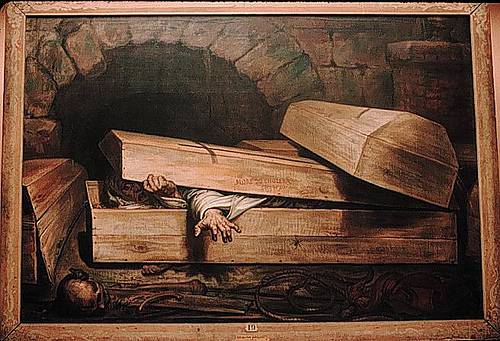
A soldier of the 93d regiment, quartered in the barracks, was looked upon to be dead, and after having been laid out in the usual way during two days, was conveyed to the place of interment (St. Nicholas’s churchyard) on yesterday evening, when, on lowering the body into the grave, the soldiers assisting heard the noise of struggling in the coffin, and on examination found the man whom they were in the act of burying, endeavouring with his hands and knees to force up the lid. To their great surprise they found their comrade still alive, and conveyed him home in the open coffin. This should prove an additional warning against premature interment.
— Courier, June 13, 1815